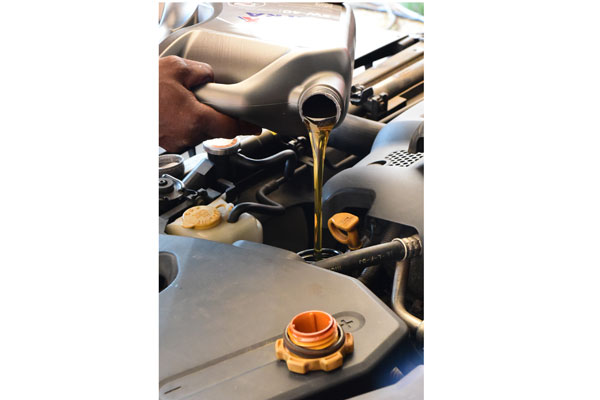Keep your car in shape by maintaining these fluids

A great way to keep your car in good running shape between major tune-ups is to check the fluids yourself. It is an inexpensive and simple way to prevent engine wear or damage, and save money at the garage.
What you need to know:
- Caution. Realising that your car is dripping some sort of mystery liquid can very be unsettling. Maybe it is nothing, or maybe you are about to face a costly visit to the mechanic. Simply go with the basic colours to identify the fluid. Black is almost always oil. Red is transmission fluid, green is coolant and clear is water.
Fluids play a huge role in almost every facet of your car, including fuel economy and longevity. Keeping them at the proper level will help your car last longer and drive better.
Engine oil
After fuel, oil is your car’s most important fluid. Oil lubricates parts that are moving thousands of times a minute and with a hair’s worth of clearance between them. It also traps carbon particles caused by combustion, and helps to cool the engine.
Most cars have a dipstick in the engine bay, which lets you quickly inspect the oil. It is best to check your oil after your engine has been turned off for at least 10 minutes so the oil can settle at the bottom and cool off. First, pull the dipstick out and wipe it clean with a towel or rag. Then, reinsert it and pull it back out.
The dipstick is marked with maximum and minimum indicators that show how much oil is in your engine. The oil on the dipstick should be near maximum. If it is at or below the minimum, add more immediately. A low reading could indicate your engine is leaking or burning oil, which can cause damage if not handled.
Coolant
This fluid works to keep everything within specified operating temperature by absorbing engine heat and dissipating it through the radiator. Maintaining the correct coolant level prevents overheating. Never check your coolant while the engine is hot since pressurised coolant can spray and cause burns.
The process to check coolant varies from car to car. If your car has a coolant expansion tank, look to see if the coolant falls between the minimum and maximum indicators on the tank. If it does not, open the radiator cap to see if the coolant is filled to the top.
Power steering fluid
If you have ever driven a much older car, it is likely that the first thing you noticed was the heavy steering. Many automakers are switching to electric power steering, which does not use fluid, but vehicles with hydraulic power steering pumps do. If you are low on fluid, the steering wheel may be harder to turn, or you will hear a squealing noise when you turn the wheel.
The power steering reservoir is usually located at the back of the engine. On most vehicles, it is clear or opaque, so you can check the level with the marker on the side. On older vehicles without a see-through reservoir, take off the reservoir cap, which contains a dipstick in the lid. Low fluid could indicate a leak, so get it checked.
Brake fluid
The importance of your car’s brakes needs no explanation. Your car’s brake system works on a hydraulic pressure system. Brake fluid serves as the hydraulic fluid that maintains that pressure. A leak in brake fluid will cause a drop in pressure, possibly resulting in brake failure. Fortunately, in most modern cars, brake fluid leaks are rare.
If you do have one, you will usually find it near the wheels or in the area directly under the brake pedal. Most cars have a brake fluid reservoir in the engine bay, and checking it is as simple as taking a look at its level and colour. Like with other fluids, make sure the level falls between the minimum and maximum indicators.
Transmission fluid
Transmission fluid serves a similar purpose as oil in the engine; it lubricates and cools the components inside your transmission. Transmissions contain gears, clutches (even in automatics), and valves which must move smoothly to provide seamless shifts.
While many transmissions come with “lifetime” fluid that should never need replacement, bad transmission fluid can cause rough shifting, strange noises, and uncontrolled surging that make driving difficult. If you experience any transmission issues, check the fluid first.
Some cars have a dipstick, however, others have sealed transmissions that require special procedures to check the fluid level. If your car has a dipstick, the process is the same as above, although you will need to have the engine turned on and the transmission in Park or Neutral to get an accurate reading. Inspect the fluid level, as well as its condition. It should be amber or red in colour, and feel smooth. Like with other fluids, if it is dark, cloudy, or gritty, it means there is a problem that needs to be inspected.
Windscreen washer fluid
This does not have any effect on your car’s performance, but it is still vital to safe driving. After all, if you cannot see where you are going, you will not get very far. Fortunately, it is the easiest fluid to maintain. Simply pour the fluid into the reservoir until it is full and close the cap.




